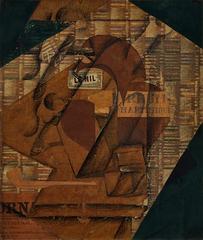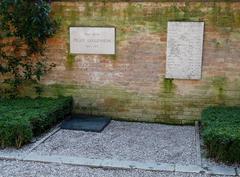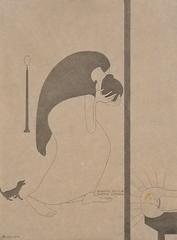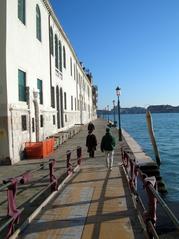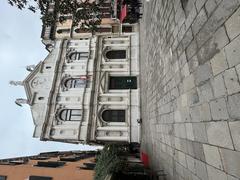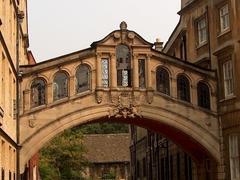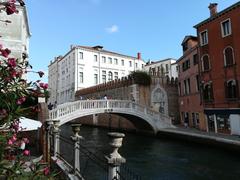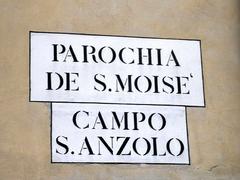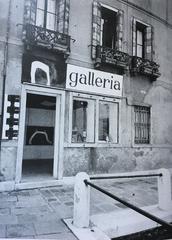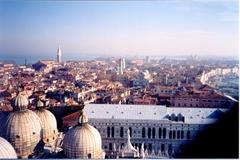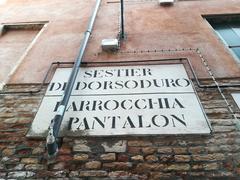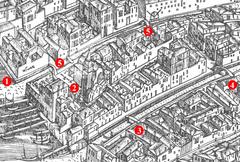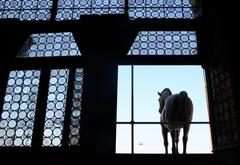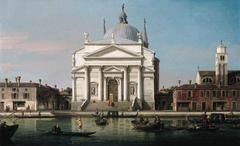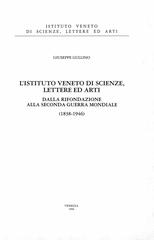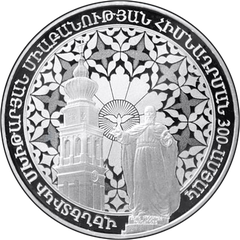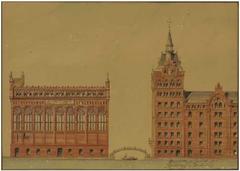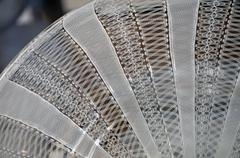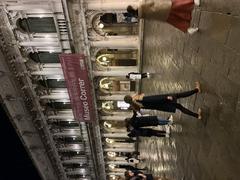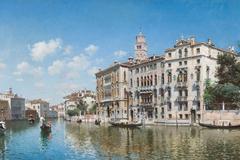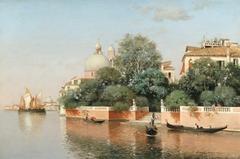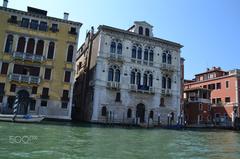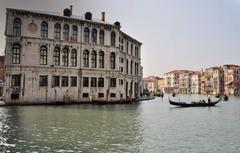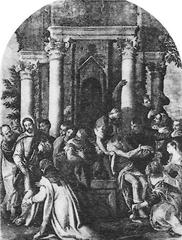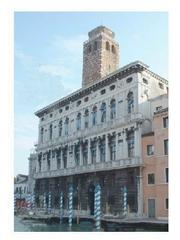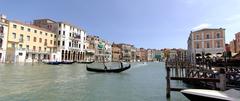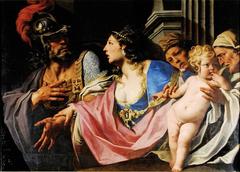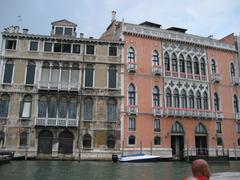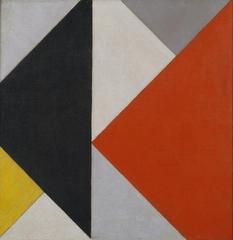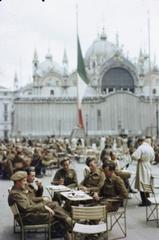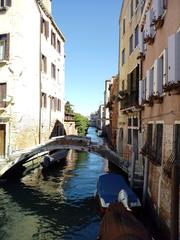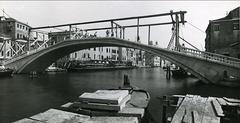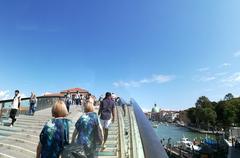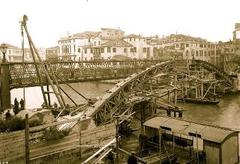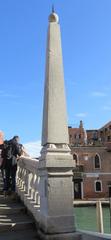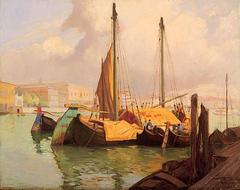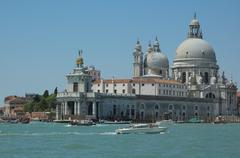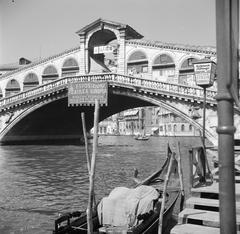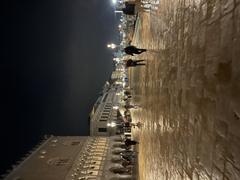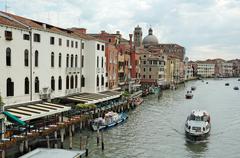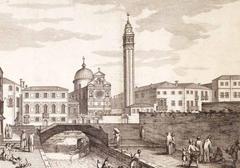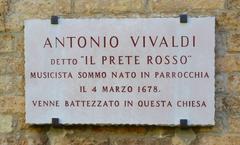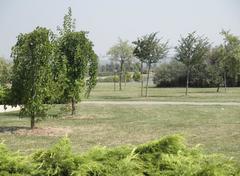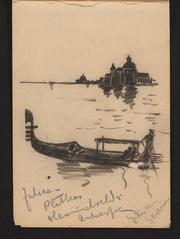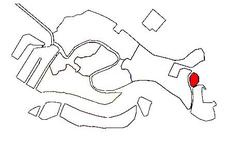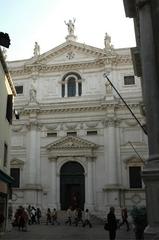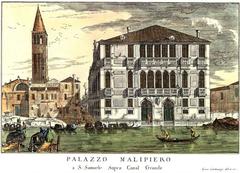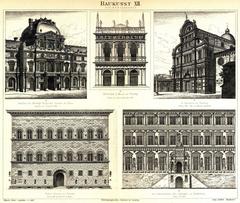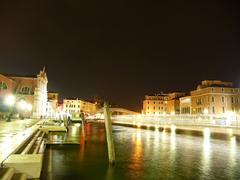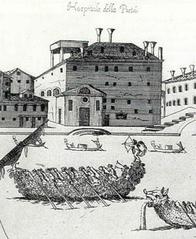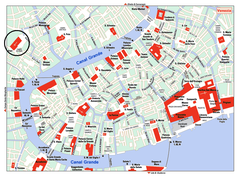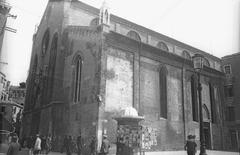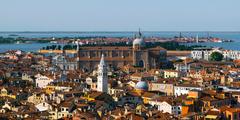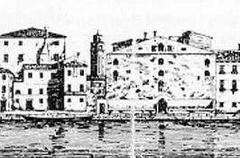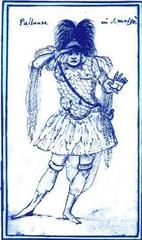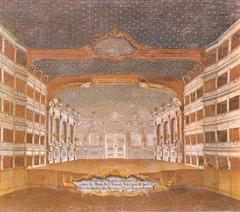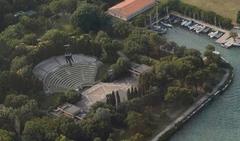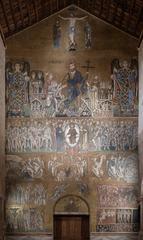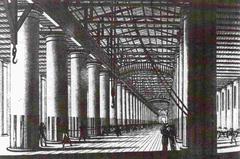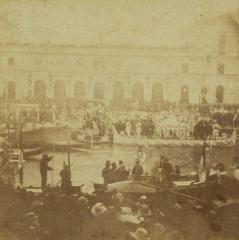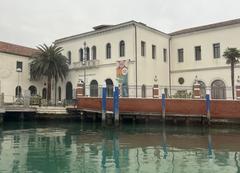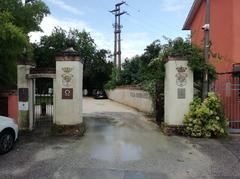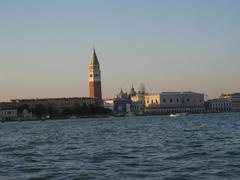
Visiting Peggy Guggenheim Collection in Venice: Hours, Tickets, and Tips
Date: 17/07/2024
Introduction
Nestled in the heart of Venice, the Peggy Guggenheim Collection stands as a testament to the evolution and preservation of modern art. Established by the visionary American heiress Peggy Guggenheim, this museum offers visitors an unparalleled glimpse into the world of 20th-century masterpieces. Housed in the historic Palazzo Venier dei Leoni, the collection includes seminal works by iconic artists such as Pablo Picasso, Jackson Pollock, and Salvador Dalí (source). This guide aims to provide comprehensive information on visiting the Peggy Guggenheim Collection, including its history, cultural significance, visitor information, and practical tips to enhance your experience. Whether you’re an art aficionado or a casual visitor, the Peggy Guggenheim Collection promises a captivating journey through the world of modern art.
Table of Contents
- [History of the Peggy Guggenheim Collection](#history-of-the-peggy-guggenheim-collectionhistory-of-the-peggy-guggenheim-collection)
- [Early Life of Peggy Guggenheim](#early-life-of-peggy-guggenheimearly-life-of-peggy-guggenheim)
- [Establishment of the Collection](#establishment-of-the-collectionestablishment-of-the-collection)
- [World War II and Relocation to the United States](#world-war-ii-and-relocation-to-the-united-statesworld-war-ii-and-relocation-to-the-united-states)
- [Move to Venice and Acquisition of Palazzo Venier dei Leoni](#move-to-venice-and-acquisition-of-palazzo-venier-dei-leonimove-to-venice-and-acquisition-of-palazzo-venier-dei-leoni)
- [Growth and Development of the Collection](#growth-and-development-of-the-collectiongrowth-and-development-of-the-collection)
- [Public Opening and Legacy](#public-opening-and-legacypublic-opening-and-legacy)
- [Significance of the Collection](#significance-of-the-collectionsignificance-of-the-collection)
- [Influence on the Art World](#influence-on-the-art-worldinfluence-on-the-art-world)
- [Visitor Information](#visitor-informationvisitor-information)
- [Visiting Hours and Ticket Prices](#visiting-hours-and-ticket-pricesvisiting-hours-and-ticket-prices)
- [Guided Tours and Special Events](#guided-tours-and-special-eventsguided-tours-and-special-events)
- [Nearby Attractions](#nearby-attractionsnearby-attractions)
- [Visitor Experience](#visitor-experiencevisitor-experience)
- [FAQ](#faqfaq)
- [Conclusion](#conclusionconclusion)
- [References](#referencesreferences)
History of the Peggy Guggenheim Collection
Early Life of Peggy Guggenheim
Marguerite “Peggy” Guggenheim was born on August 26, 1898, into the wealthy Guggenheim family in New York City. Her father, Benjamin Guggenheim, tragically perished in the Titanic disaster in 1912, leaving Peggy with a substantial inheritance. This financial independence allowed her to pursue her passion for art and culture. Peggy’s early exposure to the avant-garde art scene in Europe and America significantly influenced her future endeavors as a collector and patron of modern art.
Establishment of the Collection
Peggy Guggenheim’s journey as an art collector began in earnest in the late 1930s. In 1938, she opened her first gallery, Guggenheim Jeune, in London. The gallery showcased works by avant-garde artists such as Jean Cocteau and Wassily Kandinsky. However, it was her subsequent move to Paris that solidified her role in the art world. In 1939, she began amassing a collection of contemporary art, acquiring works by artists like Pablo Picasso, Georges Braque, and Salvador Dalí.
World War II and Relocation to the United States
The outbreak of World War II forced Peggy to leave Europe. She returned to New York in 1941, bringing her burgeoning collection with her. In 1942, she opened the Art of This Century gallery in Manhattan, which became a pivotal venue for the promotion of modern art. The gallery featured innovative exhibitions and introduced American audiences to European avant-garde artists, as well as emerging American talents like Jackson Pollock and Mark Rothko.
Move to Venice and Acquisition of Palazzo Venier dei Leoni
In 1947, Peggy Guggenheim decided to return to Europe, eventually settling in Venice, Italy. In 1948, she purchased the Palazzo Venier dei Leoni, an unfinished 18th-century palace on the Grand Canal. The palazzo became her home and the permanent location for her art collection. That same year, she exhibited her collection at the Venice Biennale, marking the first time that contemporary American art was showcased at the prestigious event.
Growth and Development of the Collection
Over the years, Peggy continued to expand her collection, acquiring works by leading modern artists such as Max Ernst, Joan Miró, and Alexander Calder. Her collection also included significant pieces by Italian futurists like Giacomo Balla and Umberto Boccioni. Peggy’s discerning eye and commitment to supporting avant-garde artists helped establish her collection as one of the most important repositories of modern art in the world.
Public Opening and Legacy
In 1951, Peggy Guggenheim opened her collection to the public, allowing visitors to view her extensive array of modern masterpieces. The Peggy Guggenheim Collection quickly became a must-visit destination for art enthusiasts and tourists in Venice. Peggy continued to live in the palazzo until her death in 1979. In her will, she bequeathed the collection to the Solomon R. Guggenheim Foundation, ensuring its preservation and continued public access.
Significance of the Collection
The Peggy Guggenheim Collection holds a unique place in the art world due to its focus on modern and contemporary art. The collection includes seminal works by artists such as Jackson Pollock, whose “Alchemy” (1947) is a highlight, and Marcel Duchamp, whose “Box in a Valise” (1935-41) is a notable piece. The collection also features important works by European surrealists like René Magritte and Max Ernst, reflecting Peggy’s personal connections and friendships with many of the artists.
Influence on the Art World
Peggy Guggenheim’s impact on the art world extends beyond her collection. Her support for emerging artists and her role in promoting modern art helped shape the trajectory of 20th-century art. The Peggy Guggenheim Collection continues to influence contemporary art through its exhibitions, educational programs, and collaborations with other cultural institutions.
Visitor Information
Visiting Hours and Ticket Prices
The Peggy Guggenheim Collection is open daily from 10:00 AM to 6:00 PM, closed on Tuesdays and December 25th. Ticket prices are as follows:
- Adult: €15
- Seniors (65+): €12
- Students (under 26): €9
- Children under 10: Free
For the most current information on visiting hours and ticket prices, please visit the official Peggy Guggenheim Collection website.
Guided Tours and Special Events
The museum offers guided tours and educational workshops for visitors of all ages. Special events, such as temporary exhibitions, lectures, and art classes, are regularly scheduled. For details on upcoming events and how to book a guided tour, please check the museum’s events page.
Nearby Attractions
While visiting the Peggy Guggenheim Collection, consider exploring other nearby historical sites in Venice. Some notable attractions include:
- The Gallerie dell’Accademia: Home to a vast collection of Venetian paintings.
- The Doge’s Palace: A masterpiece of Gothic architecture and a symbol of Venice’s political history.
- The Rialto Bridge: One of the most famous bridges in Venice, offering stunning views of the Grand Canal.
Visitor Experience
Today, the Peggy Guggenheim Collection is one of Venice’s most popular attractions, drawing art lovers from around the globe. Visitors can explore the palazzo’s intimate rooms, which house Peggy’s eclectic collection, and enjoy the tranquil garden, where Peggy and her beloved dogs are buried. The museum also offers guided tours, educational workshops, and temporary exhibitions, providing a comprehensive and enriching experience for all visitors.
FAQ
Q: Is the Peggy Guggenheim Collection accessible to visitors with disabilities?
A: Yes, the museum is accessible to visitors with disabilities. There are ramps and elevators available for easy access to different parts of the museum.
Q: Are there any discounts available on ticket prices?
A: Yes, discounts are available for seniors, students, and groups. Please refer to the ticket prices section or the official website for more details.
Q: Can I take photographs inside the museum?
A: Photography is allowed in certain areas of the museum. However, the use of flash and tripods is prohibited. Please check with museum staff for specific guidelines.
Q: Are there any dining options available at the museum?
A: The museum has a café that offers a selection of snacks, beverages, and light meals. It is a great place to relax and enjoy the view of the Grand Canal.
Q: How can I stay updated on upcoming exhibitions and events?
A: To stay updated on the latest exhibitions and events, you can subscribe to the museum’s newsletter, follow their social media channels, or regularly check the official website.
For more information on visiting the Peggy Guggenheim Collection, including opening hours and ticket prices, please visit the official Peggy Guggenheim Collection website.
Conclusion
The Peggy Guggenheim Collection is more than just a museum; it is a cultural landmark that offers a rich and immersive experience for visitors. From its unparalleled collection of modern art to its educational programs and community engagement initiatives, the museum continues to inspire and captivate audiences from around the world. By visiting, you not only gain insight into the evolution of modern art but also engage with a space that has significantly influenced the art world. The museum’s dedication to accessibility, preservation, and education ensures that it remains a vital part of Venice’s cultural landscape. Whether you’re exploring the intimate rooms of the Palazzo Venier dei Leoni or enjoying the tranquil garden, the Peggy Guggenheim Collection offers a unique and enriching experience that is not to be missed (source). Plan your visit today and immerse yourself in the world of modern art at the Peggy Guggenheim Collection.
